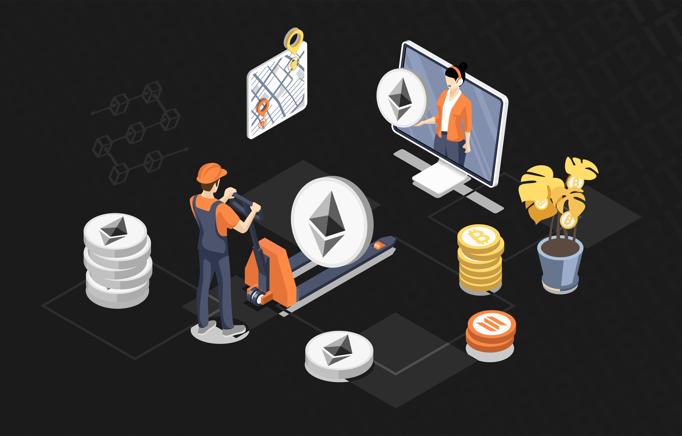What is DeFi?
العملات المشفرة للمتقدمين
مقالات أخرى
Term DeFi stands for decentralized finance. It is a new financial system based on distributed ledgers that are similar to those used in cryptocurrencies. The system decentralizes authority over money, financial products, and financial services from banks and institutions. The reasons that this technology is getting more and more attractive to users are eliminating the fees that banks charge for using their services, money is held in a secure digital wallet, anyone with internet access can use it without needing approval and you can transfer funds in seconds and minutes. A goal of DeFi is to reduce transaction times and increase access to financial services. To better understand decentralized finance, let’s first check what is centralized finance.
Your money is kept by banks, corporations whose overarching objective is to make money through centralized finance. Third parties who facilitate money flow between parties abound in the financial system, each charging a charge for their services. Let's say you used your credit card to buy a box of chocolates. The charge is sent from the merchant to an acquiring bank, which then sends the card information to the credit card network. The network cancels the charge and asks your bank for payment. Your bank approves the charge and transmits it to the network, which then delivers it back to the merchant via the acquiring bank. Merchants must pay for your ability to use credit and debit cards, so each organization in the chain receives paid for its services. All other financial activities are costly; loan applications might take days to process; and you may not be able to use a bank's services while abroad.
By allowing people, merchants, and corporations to perform financial transactions using developing technologies, decentralized finance eliminates intermediaries. Peer-to-peer financial networks that use security protocols, connectivity, software, and hardware developments are used to achieve this. You can lend, trade, and borrow using software that records and validates financial transactions in distributed financial databases from anywhere you have an internet connection. A distributed database is accessible from multiple locations; it collects and aggregates data from all users and verifies it with the help of a consensus process.
Blockchain technology, which is also used in cryptocurrencies, is used in decentralized finance. A distributed and secure database or ledger is referred to as a blockchain. dApps are the applications that conduct transactions and run the blockchain. Transactions are stored in blocks on the blockchain and subsequently validated by other users. If all the verifiers agree on a transaction, the block is closed and encrypted, and a new block is created containing information from the preceding block. The information in each subsequent block "chains" the blocks together, giving the blockchain its name. There is no method to edit a blockchain since information in prior blocks cannot be modified without impacting subsequent blocks. This notion, coupled with other security standards, ensures that a blockchain is secure.
Peer-to-peer transactions are the most used behind DeFi. It is better for everyday consumers because it works without middlemen. Meaning, you do not need approval for any transaction from a bank or similar financial establishment. It does not mean that there will not be any fee on transaction, but you will have more options since lender or receiver can be anywhere in the world.


